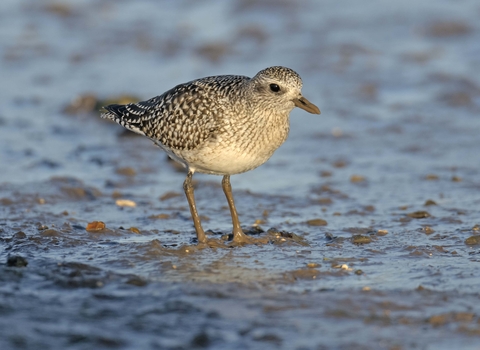
©Chris Gomersall/2020VISION
Grey plover
The grey plover is similar to the golden plover, but as its name suggests, has a silver- and black-speckled back, rather than a gold one. It is only found at the coast and is mostly a winter migrant.
Scientific name
Pluvialis squatarolaWhen to see
July to AprilSpecies information
Category
Statistics
Length: 26-29cmWingspan: 77cm
Weight: 240g
Average lifespan: 9 years
Classified in the UK as Amber under the Birds of Conservation Concern 5: the Red List for Birds (2021).
